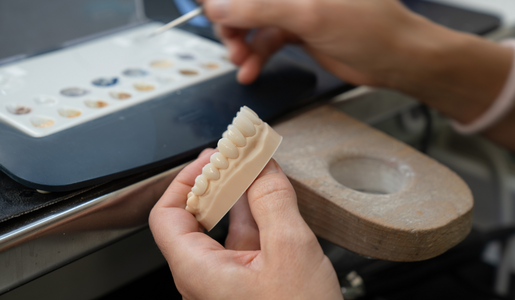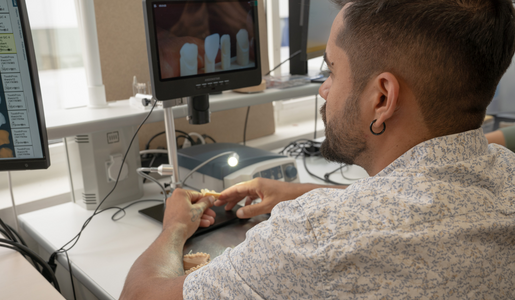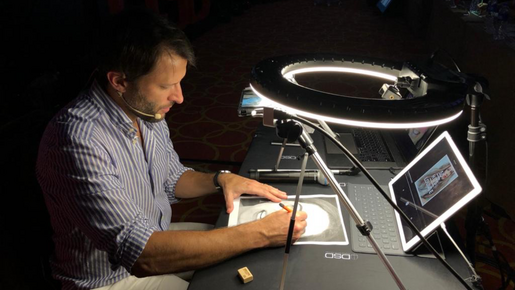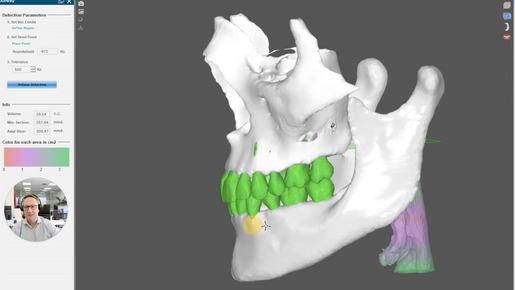
By Christian Coachman
⋅ 3 min read
⋅ Updated Oct, 2025
As both a dentist and a ceramist, I’ve had the privilege of working on both sides of the bench. I know the dedication and artistry that dental labs put into their work — but I also know that, as a dentist, there are moments of frustration when things don’t go as planned. Maybe a restoration doesn’t fit the way it should, a timeline slips, or the final product doesn’t fully reflect the design vision.
These challenges aren’t about any one dental lab; they’re part of the complex reality of turning a digital or clinical plan into a physical result. By acknowledging them openly, I believe we can make better decisions as dentists and build stronger partnerships with our labs.
In this article, I’ll share the most common dental lab problems I’ve seen from both perspectives — and, more importantly, some practical ways to solve them.

Problem #1: The inherent communication gap in dental labs
Even the best dental labs face a natural limitation: they don’t get to meet your patient in person. They can’t see their face, expressions, or personality the way you can. This lack of context often leads to interpretation and guesswork on their side.
What this looks like in practice: You may feel like you need to explain your expectations over and over. The final restoration might be technically correct but not fully in harmony with the patient’s face and character.
How to solve it: Instead of relying only on a lab slip and a scan, share a more complete “digital avatar” of your patient. High-quality facial photos and videos provide the lab with context, allowing them to design restorations with greater empathy. This isn’t about expecting a lab to read your mind — it’s about giving them the right data from the clinic side to achieve the best outcome.
Problem #2: The struggle with predictability in dental restorations
Even when they use digital tools, many labs still work with a degree of uncertainty — often because they’re involved too late in the process. Without early collaboration, predictability can suffer.
What this looks like in practice: The try-in appointment becomes a moment of stress. You can’t be completely sure the restoration will fit or function as planned, which can lead to chairside adjustments or even rework.
How to solve it: Move from a reactive to a proactive workflow by involving your lab earlier. Look for a partner who provides “validation moments” during the digital design phase, so you can review and approve before manufacturing begins. This creates a true “copy-paste” workflow where the final restoration replicates the approved prototype.
Problem #3: Limited interdisciplinary expertise across dental labs
Most labs develop strengths in specific areas — CAD/CAM design, orthodontics, or implant planning. It’s rare, however, for a single lab to offer comprehensive interdisciplinary expertise.
What this looks like in practice: With complex cases that involve multiple specialties, you may find yourself coordinating between several providers. Expecting one lab to manage everything isn’t realistic and can lead to miscommunication.
How to solve it: Think of yourself as the project manager of your patient’s case. Create smart partnerships: use an interdisciplinary planning center for diagnostics (Moment 1), a specialized aligner company for orthodontics (Moment 2), and a high-end design lab for final restorations (Moment 3). This structure allows you to leverage the right expertise at the right moment.
Problem #4: The trade-off between speed, cost and quality in dental labs
Every dental lab makes choices about what to prioritize. Some focus on speed and cost-efficiency, while others emphasize artistry and material quality. It’s nearly impossible for one lab to deliver equally on all three fronts.
What this looks like in practice: Choosing a new lab for its low prices may leave you with a subpar restoration. On the other hand, working with a boutique artistic lab might deliver beautiful results but with long turnaround times for even simple cases.
How to solve it: Identify each lab’s strengths and align them with the right type of case. Use your high-volume, cost-effective lab for routine cases, and turn to your boutique, high-artistry lab for complex or esthetically demanding work. Building a network of labs helps balance cost, speed, and quality while giving you more predictable outcomes.

Problem #5: Gaps in communication and accountability with dental labs
Even with strong systems, labs can feel somewhat disconnected from the patient experience. Without a direct view of the clinical setting, it’s harder for them to feel the same urgency and accountability as the treating dentist.
What this looks like in practice: A restoration may look fine at first, but reveal a flaw on closer inspection. Fixing it takes extra time and resources, and the responsibility can feel one-sided, creating strain in the relationship.
How to solve it: Build a partnership based on shared responsibility. On the clinical side, provide complete, high-quality data — visible margins, precise preps, and full documentation. On the lab side, expect visual confirmation of their work before shipping. This two-way digital workflow creates transparency, shared ownership, and stronger long-term results.
Turning lab challenges into reliable results
Every dental lab has its limitations, but finding the right partner can make a big difference in how predictable and stress-free your restorative work becomes. The DSD Lab is unique in that it’s directly connected to an interdisciplinary planning center, where doctors and specialists collaborate on cases to give you a broader perspective.
This connection brings three important advantages: reliable digital workflows that reduce uncertainty, access to multiple specialties working together on the same case and education support that can help you communicate your value more clearly to patients.
With this approach, the DSD Lab aims to support clinicians in turning treatment plans into results. Learn more about how the DSD Planning Center and Lab works.
Follow us on Instagram, Facebook, and LinkedIn to stay updated.




























